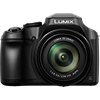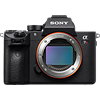Main
Model
Price
Advantages
launch
Announced
Body type
Camera subcategory
Sensor
Effective pixels
Max resolution
Sensor size
Sensor type
Processor
Image ratio w:h
Sensor photo detectors
Image
ISO
Boosted ISO (maximum)
White balance presets
Custom white balance
Image stabilization
Uncompressed format
Boosted ISO (minimum)
Image stabilization notes
CIPA image stabilization rating
JPEG quality levels
Photography features
Minimum shutter speed
Maximum shutter speed
Maximum shutter speed (electronic)
Aperture priority
Shutter priority
Manual exposure mode
Subject / scene modes
Built-in flash
Flash range
External flash
Flash modes
Self-timer
Metering modes
Exposure compensation
AE Bracketing
WB Bracketing
Continuous drive
Screen / viewfinder
Articulated LCD
Screen size
Screen dots
Touch screen
Screen type
Live view
Viewfinder type
Viewfinder coverage
Viewfinder magnification
Viewfinder resolution
Videography features
File Format
Microphone
Speaker
Optics & Focus
Focal length (equiv.)
Optical zoom
Maximum aperture
Autofocus
Digital zoom
Manual focus
Normal focus range
Macro focus range
Number of focus points
Lens mount
Focal length multiplier
Physical
Weight (inc. batteries)
Dimensions
Environmentally sealed
Battery
Battery details
Battery Life (CIPA)
Storage
Storage types
Connectivity
USB
HDMI
Microphone port
Headphone port
Wireless
Wireless notes
Remote control
Other features
Orientation sensor
GPS
Timelapse recording
Samples
Videos
Summary
The Alpha a7R III highest resolution of 7952 x 5304 pixels (42 megapixels) is better in comparison with the Panasonic Lumix DC-FZ80 (Lumix DC-FZ82) maximum resolution of 4896 x 3672 pixels (18 megapixels). The Alpha a7R III is produced with larger sensor compared to the Panasonic Lumix DC-FZ80 (Lumix DC-FZ82): Full frame (35.9 x 24 mm) versus 1/2.3' (6.17 x 4.55 mm). This is very significant specification of this model as big sensor lets the photographer to capture photos of the better quality. The Alpha a7R III has a wider ISO range of 100-32000 than 80-3200 ISO range of the Panasonic Lumix DC-FZ80 (Lumix DC-FZ82). Such ISO numbers let the photographer to capture good quality photos in low light situations. The Alpha a7R III provides more presets of white balance - 10. This option gives the photographer more control over colour. The Alpha a7R III provides more number of focus points than the Panasonic Lumix DC-FZ80 (Lumix DC-FZ82): 425 vs 49. More number of focus points means more convenience while attempting to focus on subjects that are not centred.
The Sony Alpha a7R III is equipped with tilting display that will let the photographer to make great selfies. The Alpha a7R III screen is better as it has more number of screen dots 1,440,000 in compare to 1,040,000 dots of the Panasonic Lumix DC-FZ80 (Lumix DC-FZ82) screen. The higher dot count screen is better for reviewing pictures on your camera. The Alpha a7R III offers better lowest (30 seconds) and highest (1/8000 second) shutter speeds.
The Panasonic Lumix DC-FZ80 (Lumix DC-FZ82) is equipped with built-in flash. The Alpha a7R III battery life is better than the Panasonic Lumix DC-FZ80 (Lumix DC-FZ82) battery life. In accordance with CIPA standards the camera owner will be able to capture 650 photos with the Alpha a7R III and only 330 with the Lumix DC-FZ80 (Lumix DC-FZ82). The Panasonic Lumix DC-FZ80 (Lumix DC-FZ82) weighs 616g that is 41g less in comparison with the weight of the Sony Alpha a7R III.
Taking into account the above-mentioned differences the Sony Alpha a7R III will become the best choice. Get the list of the best offers on Amazon.


